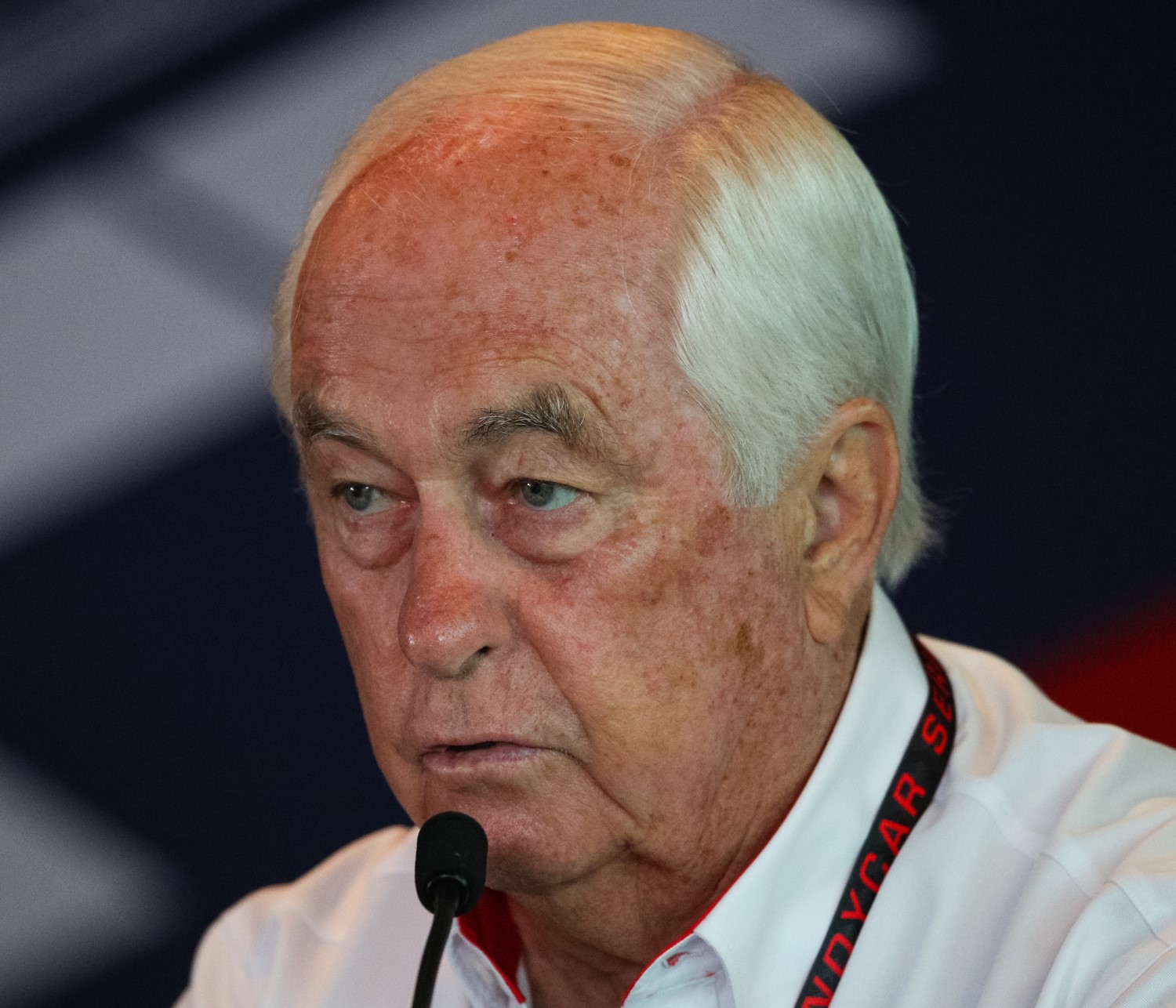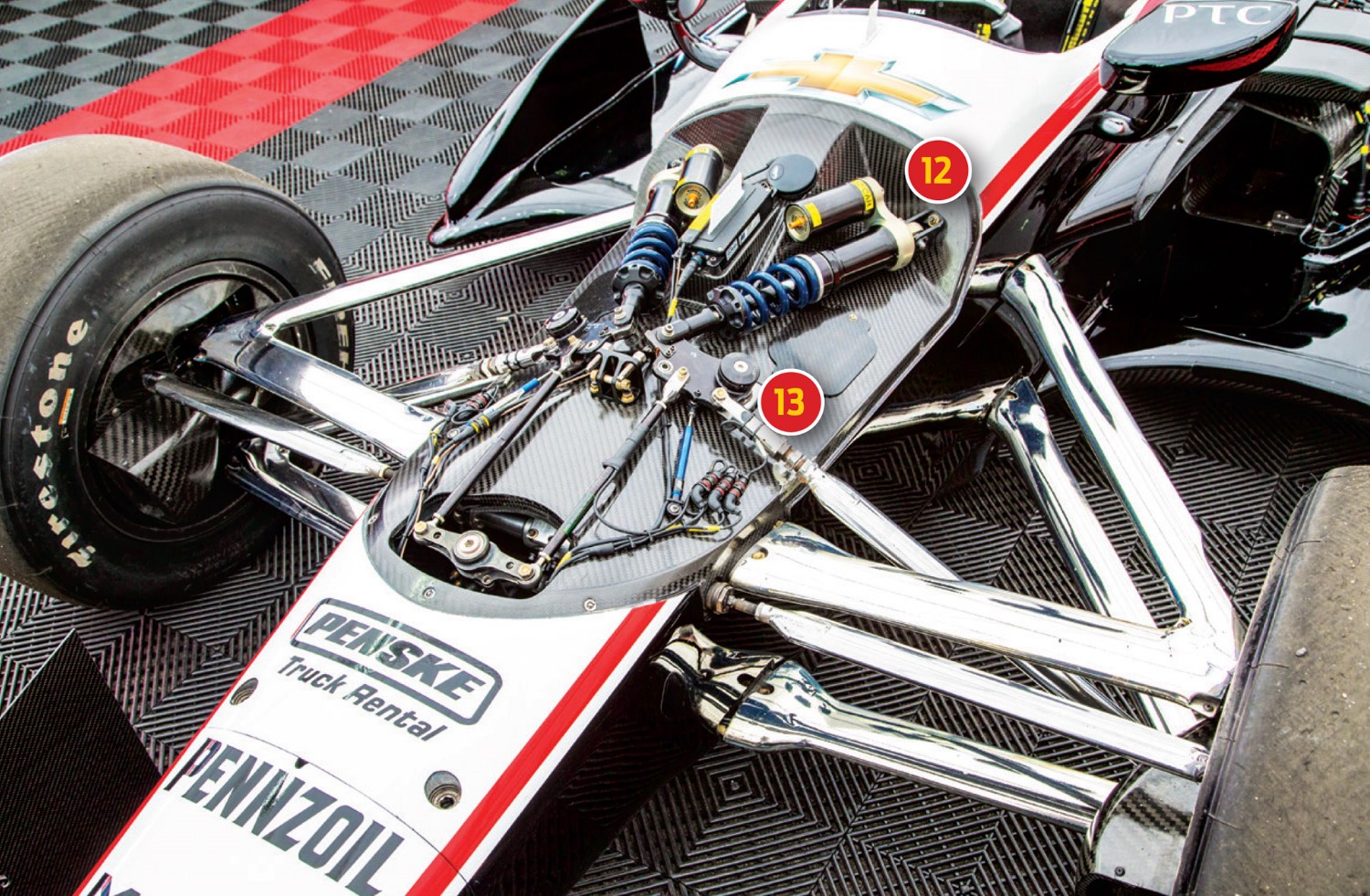Penske sees great things happening with new Indy car for 2018
 |
| Roger likes what he sees – of course his team did most of the testing of the new car so has all the setups in their pocket. And no one can beat the Penske shock cars. |
Roger Penske sounds eager to see how Verizon IndyCar Series drivers adapt to racing new cars with universal aero kits that reduce drag and require more skill to manage high speeds into the corners.
When the team owner with the most Indy car wins in history wasn’t expressing his satisfaction with how INDYCAR is helping teams manage costs with the 2018 car, he was praising its technical design Tuesday at the North American International Auto Show at Cobo Center.
“What they’ve done from a competitive standpoint, and also when you look at it from the driver’s standpoint, it puts the driver back in the car," Penske said at the car’s official unveiling. “It’s a whole different driving technique. It’s going to be interesting to see what drivers adapt to it quickly.
“(Before), the downforce made the car easier to drive because the car was so stuck to the ground. Now, with the high speed and (less) downforce, getting into the corners, the car will be more free and they’re going to have to really be on top of it. It’s going to bring the cream to the top, for sure."
Standing near the media scrum around Penske was one of his drivers, Josef Newgarden, the reigning series champion whose title was the 15th in Indy cars for his owner. Team Penske’s Simon Pagenaud won the year before and Will Power triumphed in 2014.
So, Penske is understandably confident in his formidable trio.
“I love my drivers," he said.
The 80-year-old Penske gushed about Newgarden, a 27-year-old Tennessean who won four races in his first season with “The Captain" to edge Pagenaud for the championship.
“Josef is a superstar and to see what he did last year for us is amazing," Penske said. “He’s an exciting young man, an American driver who has had success and he does a great job for us on and off the track.
“When you look at the series over the years, it’s been the United Nations. Now with Graham Rahal and with Josef, we’ve got some good (American) talent there."
Race teams began testing the new cars this month and the reviews have been overwhelmingly positive. More private team tests are scheduled in the coming weeks, as well as a series-wide open test Feb. 9-10 at ISM Raceway near Phoenix.
When the 17-race season begins March 11 with the Firestone Grand Prix of St. Petersburg (12:30 p.m. ET, ABC), will Penske’s people need to coach their drivers accordingly on which competitors have effectively transitioned to the new cars? In other words, will word circulate on which drivers might make others wary?
“As they get on the racetrack, they know who to look for," Penske said. “We don’t have to do much coaching. These guys are pretty good on their own."
The changes are expected to level the playing field for most teams, although smaller teams without much experience in the previous cars will still face a steeper learning curve. They don’t have the data to compare with a powerhouse operation like Team Penske.
But Penske reiterated that the new era of Indy cars will also help teams that don’t have large budgets.
 |
| What is inside Penske's shocks that no one else has? |
“What I like about it is we can sell our older cars and buy new ones and teams can buy a used car and go get the new aero kit and compete," he said. “That’s what’s nice about it from a cost perspective. That, to me, is what we need to have in this sport.
“With the escalation of technology tying into these race cars, the cost has just gone out of sight. What they’ve done at INDYCAR is bring these costs back. The aero kits are the same, we all buy it, they’re supplied by one supplier, so we don’t have costs that are out of sight. That, to me, is some good rational thinking that’s gone into it."
A new car costs about $500,000, he said, and the new aero kits range in price from $150,000 to $200,000 with teams receiving support from INDYCAR and the manufacturer, Dallara.
“This kit is an evolution of the race car over a number of years," Penske said. “The costs are down and today we’re looking at that in racing because they’ve been escalating so much over the past several years.
“The changeover will be minimal for us. We’ll get to use our old chassis (the Dallara IR-12 in use since 2012), which we know about, we have parts for those. It’s a matter of (adjusting to) the new look and the new aero kits. It’s an evolution of the existing car, but it gives us a different product for the drivers and the teams."
The teams’ reliance on different aero kits in the past was known to cause angst between manufacturers and teams, he said.
“With this now, there’s no question," Penske said. “It’s about drivers. It’s about strategy. And it’s about engines. That’s what the public is going to like." Phillip B. Wilson/IndyCar
